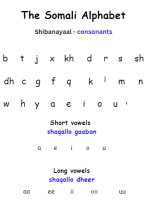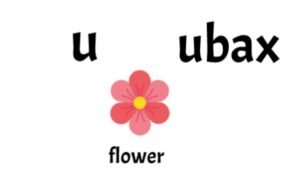How to help your child to learn Somali
The Somali language is phonetic and it is easy to learn to read once you know the letters and the sounds. There are 26 sounds, consonants, short vowels and long vowels.
Teach your child the letters and sounds using flash cards to begin with. Once they know the sounds they can start reading simple words.
The letters used by the Somali language are the same as the Roman letters of the English language. P, Z and V do not exist in the Somali alphabet. J, X and C make sounds that are not present in English. J has a ‘ch’ sound as in jiir (rat), X has a glottal sound similar to H in English but from the back of the throat as in xadhig (rope) and C is an ‘a’ sound from the back of the throat as in caano (milk).
Digraphs are used for some sounds that are not in the English alphabet, Kh is a ‘k’ sound from the back of the throat as is khamiis (man’s robe) and Dh is produced with the tongue hitting the roof of the mouth as is dhar (clothes).
Practice the sounds with your child using the Somali alphabet videos and flash cards so they become familiar. The phonic sounds page has audio of the tricky sounds. Play games such as matching sounds to letters or pictures to words.
Once they have mastered the sounds they can start reading words by putting the sounds together. The words are literally that – sounds put together. No confusing spellings to contend with just straight forward phonetic sounding out of words.
There are flashcards, videos and beginner books such as Alfabeetada Af Soomaaliga and Tirada Baro books in the publications section as well as books to accompany the videos constituting a beginners course for children aged 5+ years. Flash cards can be used with children from about 3 years old or nursery age.



